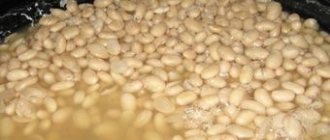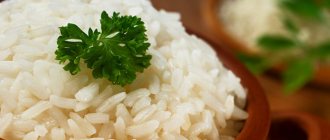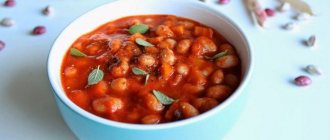There are about 75 types of beans in the world, varying in color, size, and origin. Of all the colorful varieties of beans, the black variety deserves special attention. About what makes this “scorching brunette” so attractive is this article with recipes:
Black bean puree, a la Hummus (gluten free)
Black Bean Soup with Buckwheat (Gluten Free)
Pasta-Shells stuffed with black beans and spinach
Mexican Black Bean Vegetarian Burger
See other recipes here and below.
When we talk about the benefits of beans of any kind, the first thing we should mention is the absolutely unprecedented combination of protein and fiber - two, perhaps, the most important components in weight control (and not only!). Among all the food products consumed in the world, beans and legumes are the absolute champions in this regard. In the case of black beans, another advantage is added to the indicated advantage, due to its dark color.
It is well known that brightly colored fruits and vegetables are the best sources of valuable antioxidants, known for their protective ability to neutralize the negative effects of free radicals. The darker the color, the stronger the antioxidant activity. It doesn't get any darker than black. Therefore, it is reasonable to believe that the outer shell of black beans contains a lot of these beneficial phytoelements, which was confirmed by a recent study (Journal of Agriculture and Food Chemistry). Gram for gram, in comparison with other representatives of beans and legumes, their black variety turned out to be the best in this indicator.
It is worth mentioning another property of black beans that is important in modern life. You have probably already heard well about food preservatives - sulfites (E220 -E229), which can cause digestive system disorders, headaches and distraction. Black beans, due to their high levels of the mineral molybdenum, can help the body detoxify harmful sulfites.
Before sharing the recipes, I want to give some practical tips for preparing bean dishes. I suggest boiling it at least half a kilo at a time (for a family of four people it won’t be too much). Since the whole process is quite troublesome and long, it is worth making a lot of this “wealth” at once, and then using it over the next few days. Such a technique in our hectic times never ceases to justify itself. The time savings are considerable, and there are health benefits as well. Which? “Killing several birds with one stone” at once:
- increase the consumption of vegetables (10-11 servings of vegetables and fruits per day will not seem like an impossible task),
- we reduce the consumption of things in the diet that are harmful to health, namely: we replace (at least partially) animal protein, and with it unnecessary (saturated) fats,
- adding valuable fiber with all the health benefits that come from it (The recommended minimum is about 30 grams per day. Half a cup of black beans provides a quarter of the daily fiber requirement.)
What you need to know about cooking beans
To soak or not to soak?
Imagine, this question has become the topic of special scientific research designed to study all the pros and cons of soaking beans before cooking. There were clearly more advantages. The 15% loss of phytoelements and minerals along with the liquid after an eight-hour soaking is more than “paid for” by its three advantages:
- better absorption of preserved nutrients,
- a decrease in the strength of “gas attacks” by about a third during the passage of the intestines, as well as the fact that
- prolonged soaking does not destroy the very valuable component of beans (called “resistant starch” in English), which is credited with beneficial effects on digestion and weight control.
Soak overnight in a large bowl, so that the water covers the beans by 4-5 cm. To avoid fermentation, place everything in the refrigerator. To reduce gas formation, it is useful to change the water several times.
What's the best way to cook?
For traditional cooking, we use the following proportion: 3 cups of water per 1 cup of beans. The liquid should cover the beans by 3-4 cm. Bring to a boil, then turn down the heat to very low, cover lightly with a lid. Cook until softened without adding salt or sour spices, as they can slow down the cooking process and make the beans too hard. Remove the foam that forms during the cooking process with a slotted spoon. From the point of view of better preservation of valuable nutrients, it is recommended to cook beans over very low heat. For this reason, the process of cooking black beans can take up to one and a half to two hours. If you add garlic, cumin or a little soda, it is believed that in this way you can also weaken the “musicality” inherent in the beans.
You can also cook it in a pressure cooker, which will significantly save time (it only takes half an hour). Store the cooked beans in the refrigerator in a closed container and use them within three days.
If you don’t have time to cook, then for convenience you can simply buy canned beans. Personally, I still prefer home-brewed. This way, we don't risk getting unnecessary amounts of salt and preservatives, as well as the harmful chemical compound (bisphenol - BPA) emitted by the inner coating of most current canned packaging.
What to cook with black beans?
Cooked in large quantities, beans can be used to prepare a variety of dishes, from adding to leaf salads to desserts.
The black bean recipes below are suitable for a vegetarian diet, however, meat lovers can easily adapt Nos. 2, 3 and 4 to their taste by replacing half the specified amount of beans with minced boiled (stewed) chicken or turkey breasts. This choice of animal protein is considered best for the prevention of cardiovascular disease and colon cancer.
Black bean puree (a la Hummus)
Source Sparkpeople
Prepares quickly. Perfectly applied to diet bread, pita, lavash (try to choose, if possible, those made from whole grains).
And if you spread thin slices of whole grain bread with this paste, and put chopped tomatoes, corn kernels (from a jar), bell peppers and cilantro (whatever you have) on top, sprinkle a little cheese on top, you will get some semblance of Mexican pizza - “black bean” pizza".
Cooking time - 5 minutes
10 servings
Ingredients:
- 1.5 cups cooked black beans or 1 can canned, rinsed of salt under running water
- 1 tsp garlic powder or 1 large fresh clove, pressed through a press
- 1 tsp onion powder or 2 tsp. freshly grated
- 0.5 tsp paprika
- 0.5 tsp chili powder
- 1 tsp ground cumin (cumin)
- 0.5 tsp ground turmeric (ground turmeric)
- juice of half a lemon (or to taste)
- water - 2-3 tbsp. l.
Preparation:
Place the beans in a food processor. Add spices, lemon juice, water and grind to a puree. You can do without a food processor by mashing the beans with a potato masher or a fork.
Nutritional properties : per 1/10 of the recipe: Energy value - 59 cal, Fat content -0g, carbohydrates -10.6g, fiber - 4g, protein - 4g.
Black bean soup with buckwheat
Source: Adapted from Vegetarian Times:
Buckwheat plays a leading role in this soup. It takes no more than half an hour to prepare, but the taste and consistency in the end are not inferior to those that simmer on the stove for hours.
4 servings
Ingredients
- 1 tbsp. olive oil
- 3/4 cup finely chopped onion
- 3/4 cup chopped red pepper (can be frozen)
- 3 cloves garlic, finely chopped (1 tbsp)
- 1/4 cup buckwheat
- 1 tsp dry chili powder
- 2 cups vegetable broth (low salt)
- 1.5 cups cooked black beans or 1 can canned, rinsed of salt under running water
- 1 cup grated carrots
- 1 cup corn kernels (I use frozen)
- 1 bay leaf
- 1/4 cup chopped cilantro
- 2 tbsp. lime or lemon juice
- salt, pepper or a mixture of salt-replacing herbs
- Additionally – ½ cup chopped leafy vegetables (kale, spinach, broccolini, frozen)
Preparation:
1. Heat oil in a heavy-bottomed saucepan over medium heat. Add onion and pepper, simmer for 5 minutes.
2. Add garlic, buckwheat, chili pepper and simmer for another 3 minutes. Pour in the broth, add cooked beans, carrots, corn, and bay leaves. Add 2 cups of water, spices, salt and/or salt-replacement herbs. Cover with a lid, bring to a boil and cook for 20 minutes or until the buckwheat is cooked.
3. Add leafy vegetables (if using) during the last 3-5 minutes of cooking. Bring to taste with lemon or lime juice.
Nutritional properties:
For 1 serving (1 glass): Energy value – 232 cal, Fat content – 5 g, saturation <1 g, carbohydrates 42 g, cholesterol 0 g, protein – 9 g, fiber 8 g.
Properties of black beans
How much do black beans cost (average price per 1 kg)?
Moscow and Moscow region.
50 rub.
Bean or Phaseolus belongs to the legume family and unites approximately 87 plant varieties under its name. However, not all types of beans are cultivated in order to subsequently use the fruits of the plant for food. There are varieties of beans that are used exclusively for decorative purposes. The most commonly cultivated type of bean is the common bean or Phaseolus vulgaris.
Currently, there are a sufficient number of different varieties of common beans, which differ from each other in the color of the fruit, as well as in the appearance of the plant itself and, in addition, in taste and consumer qualities. In cooking, not only bean seeds are used, but also the green pods of the plant. Historians claim that beans, along with other types of plants from the legume and cereal families, are considered one of the fundamental crops that the inhabitants of the ancient world began to cultivate.
It is believed that beans were first cultivated in Mexico and Peru. Beans came to Europe thanks to the tireless traveler Christopher Columbus. Beans entered the territory of the Russian Empire from France at the turn of the 17th-18th centuries, apparently for this reason, for a long time the plant was called nothing more than “French” beans. It is also noteworthy that the beans did not immediately appeal to the taste of the residents and took root in Russia. At first, beans were grown only as an ornamental plant.
Only over time did beans gain well-deserved popularity and in our time the plant is considered a widespread vegetable crop in the Russian Federation. Black beans are considered one of the healthiest and at the same time delicious varieties of the plant. The beneficial properties of black beans have long been familiar to humans. It is believed that the unique benefits of black beans for the human body lie primarily in the chemical composition of the plant, which is enriched with various beneficial compounds of natural origin.
Pasta-Shells stuffed with black beans and spinach
Take my word for it. It is delicious!
Adapted from source
4 servings
Ingredients:
- Approximately 100 g large pasta shells
- 1.5 cups cooked black beans or 1 can canned
- 250 -300 g frozen chopped spinach
- 150g finely chopped tomatoes or tomato sauce (preferably unsalted)
- 4 cloves finely chopped garlic
- 1 teaspoon olive oil
- 1 – 1 ¼ cups spaghetti sauce (lightly salted)
- Mozzarella or other easy-melting white cheese (4 tablespoons or to taste)
Preparation:
1. Boil the shells according to the instructions. Set aside for now.
2. Preheat oven to 175 degrees or 350 F.
3. Heat olive oil in a large frying pan and add garlic. Lightly fry.
4. Add chopped tomatoes (or tomato sauce), simmer for another 5 minutes.
5. Thaw spinach, squeeze out excess water. Rinse canned beans under running water to remove excess salt and preservatives.
6. Place spinach and beans in a frying pan with tomatoes and simmer for 5 minutes.
7. Using a potato masher, mash the beans in the pan.
8. Spoon spaghetti sauce evenly into a baking dish, reserving ¼ cup.
9. Stuff the shells with the vegetable mixture and place them in a baking dish.
10. Pour the remaining tomato sauce on top and sprinkle with cheese.
11. Bake for 15 – 20 minutes or until the cheese is lightly golden brown.
This dish can also be prepared in the microwave. Mode – 3 minutes at 100% power, then 7 minutes at 70%.
Nutritional information : Per 1 serving (310g): Energy value - 357 cal, fat content - 9g (14%), saturated 4g (18%), cholesterol - 30mg, carbohydrates - 50g, fiber - 11g (45%), protein - 20g, vitamin A 197%, C - 19%, calcium 36%, iron -25%.
The percentage is based on a 2000 cal daily intake.
Benefits of black beans
The beneficial properties of black beans are expressed in the fact that the protein contained in the plant is closest in its chemical parameters to protein of animal origin. In addition, the unique benefits of black beans lie in the fact that the fruits of the plant perfectly saturate the body and also move evenly through the human gastrointestinal tract, which helps provide all the necessary microelements, as well as vitamins and nutrients.
When eating black beans, the human body does not feel pangs of hunger for a long time. In addition, black beans normalize the level of bad cholesterol in the blood, thereby minimizing the risk of the occurrence and development of cardiovascular diseases. Recent studies have shown that regular consumption of black beans helps prevent cancer, namely the occurrence of malignant tumors in the intestines.
Black beans are prepared in the same way as other types of the plant. Black beans are usually used to make soups, porridges, or salads. Black beans often become an integral ingredient in main dishes. Most popular. Black beans are used in Latin American countries.
Mexican Black Bean Vegetarian Burger
I personally first learned about the existence of bean cutlets in the late 80s, during the period of perestroika, when, due to the lack of meat in stores, workers had to experiment with other, less familiar sources of protein. At that time, I couldn’t even imagine that bean cutlets could be so tasty (and different). In the recipe below, they go well with coleslaw coleslaw.
Source: Adapted from Allrecipes.com
Cooking time: 15 minutes
Cooking time 20 minutes
Number of servings: 4
Ingredients:
- 1.5 cups cooked black beans or 1 can canned, rinsed of salt under running water
- ½ chopped fresh bell pepper (or ½ cup frozen)
- ½ onion chopped
- 3 cloves garlic, chopped
- 1 egg or 2 egg whites (the yolks can be used to make homemade shampoo)
- 0.5 - 1 tbsp. chili powder (for those who like it spicy)
- 1 tbsp. ground cumin
- 1 tsp hot pepper sauce
- 1/2 tbsp. rolled oats crushed in a blender or ground crackers (preferably whole grain)
Preparation:
1. Preheat the oven (broiler) to 190 degrees (375 F). Lightly grease a baking sheet with vegetable oil.
2. In a large bowl, use a potato masher or fork to mash the cooked (or canned) beans to a paste.
2. Grind onion, garlic, and pepper in a food processor. Place in bowl with beans.
3. In a small container, mix the egg (or whites), spices and sauce.
4. Add the egg mixture to the bean mixture. Mix with ground breadcrumbs. Knead until the mass begins to stick together well. Form 4 round burgher cutlets.
5. Place on a baking sheet and bake in the oven for about 10 minutes. Turn the cutlets over to the other side and bake for another 10 minutes.
Nutritional properties : per 1 serving, energy value 207 cal, fat content -3g, cholesterol - 53mg, carbohydrates -35g, fiber 9g, sodium 154mg (if using canned), protein - 12g.
Enjoy your meal!
When using materials from this article, please refer to the ProfiLectory.
More recipes with black beans:
Black beans in borscht and chili - 4 recipes
Chocolate cake like Prague (grain-free, gluten-free and casein-free)
I recommend:
Two simple recipes for dietary baking
White and black bean muffins recipes. baking for diabetics
Low Calorie Chocolate Black Bean Brownie
Two simple recipes for dietary baking
White and black bean muffins recipes. Baking for diabetics
Secrets of dietary baking 2. Beans and fruits in recipes
Irina Baker, MS, BBA, CCL – Certified Fitness & Wellness Consultant
Copyright 2012
Your mark:
ProfiLectorium online:
- Click to print (Opens in new window)
- Send this to a friend (Opens in new window)
- Click here to share content on Facebook. (Opens in a new window)
- Click to share on Pinterest (Opens in new window)
- Click to share on Yandex (Opens in new window)
- Click to share on WhatsApp (Opens in new window)
- Click to share on Twitter (Opens in new window)
- Click to share on Telegram (Opens in new window)
Similar
Tags: Vegetarianism, Healthy eating, Fiber, Weight control, Healthy recipes, protein, black beans, RusAmWellness
Posted in: Nutrition, Recipes, Beans, lentils and beans










